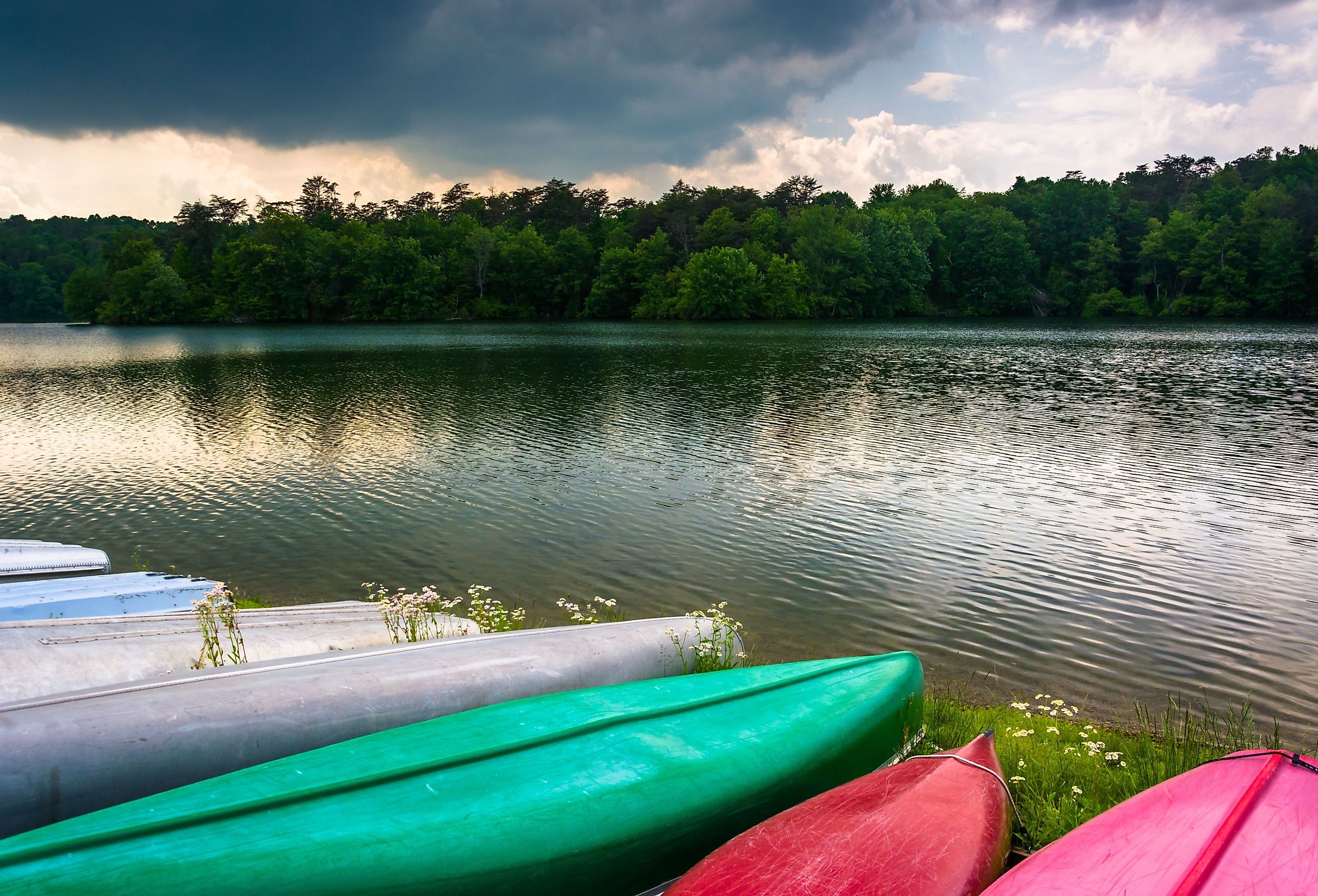
5 Most Rattlesnake Infested Areas in Maryland
Maryland is home to two species of venomous snakes—one of which is the timber rattlesnake, Crotalus horridus. This viper has a nasty bite, causing a painful and possibly life-threatening reaction. The good news is that rattlesnakes are shy. They don’t enjoy confrontation and will stay out of the way of humans, striking only when threatened. It’s illegal to harm or kill a rattlesnake in Maryland, where they are classed as vulnerable.
It’s very unlikely that a visitor to Maryland will come across the state’s venomous residents. Most of the time, you’ll never know if a snake is in the area. But it’s wise to be prepared and know their behaviors, habitats, and markings. Timber rattlesnakes are the only snakes in Maryland that have a rattle at the end of their tail, so that makes them stand out. However, they can come in two different colors. Some are yellow, grey, or brown, with dark brown to black chevrons. Others are mostly black, with black and dark markings along their body. They grow to an average of 3 feet long.
Timber rattlesnakes are generally found in forested uplands and rocky ridges. They like to hide in tucked-away crevices and dark holes, so you should never reach into leaf piles, rocks, woodpiles, or between fallen logs. The vipers are mainly found in Maryland’s four western counties of Frederick, Washington, Allegany, and Garrett.
Catoctin Mountain Park
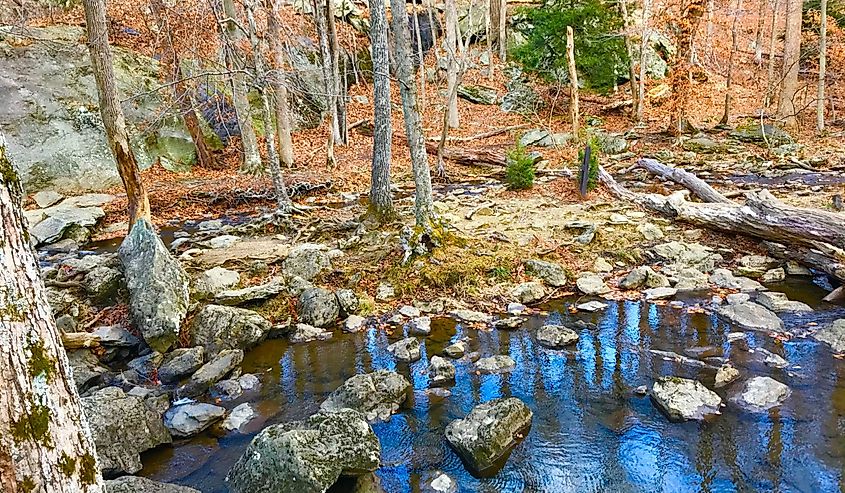
Rattlesnakes like to hang out at higher elevations, like the peaks of the Blue Ridge Mountains in Catoctin Mountain Park in Frederick County. They are one of 14 species of snake found in the park and prefer habitats such as rocky slopes, rock piles, rocky streams, disused buildings, and woodpiles. The forests, streams, and rocky, mountainous terrain make the park a perfect hangout for rattlesnakes. Keep an eye out for hiking paths, including those around the Blue Ridge Summit Overlook, Thurmont Vista, Chimney Rock, and the park’s highest point. Hog Rock. Rattlesnakes tend to be reclusive, so encounters are rare, but it’s important to be aware of your surroundings and not venture off the marked trails.
Sugarloaf Mountain
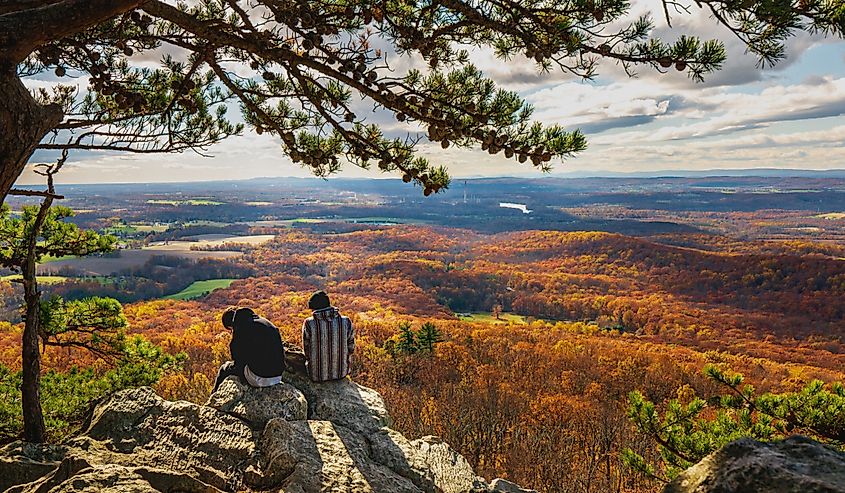
Sugarloaf Mountain is a registered national landmark south of Frederick, in northeast Maryland. It’s a relatively small mountain, reaching 1,282ft in elevation, with rocky cliffs at the summit that provide an ideal habitat for rattlesnakes. The mountain also has dense oak forests and a thriving wildlife population which includes black bears, coyotes, raccoons, and Maryland’s other venomous snakes, the copperhead. Sugarloaf Mountain is privately owned but open to the public year-round and has four hiking trails with varying difficulty, ranging from a 1.5-mile pathway to a 7-mile loop around the base of the mountain. Visitors are advised to keep their distance if they spot a snake and not interfere or disturb it.
Prettyboy Reservoir
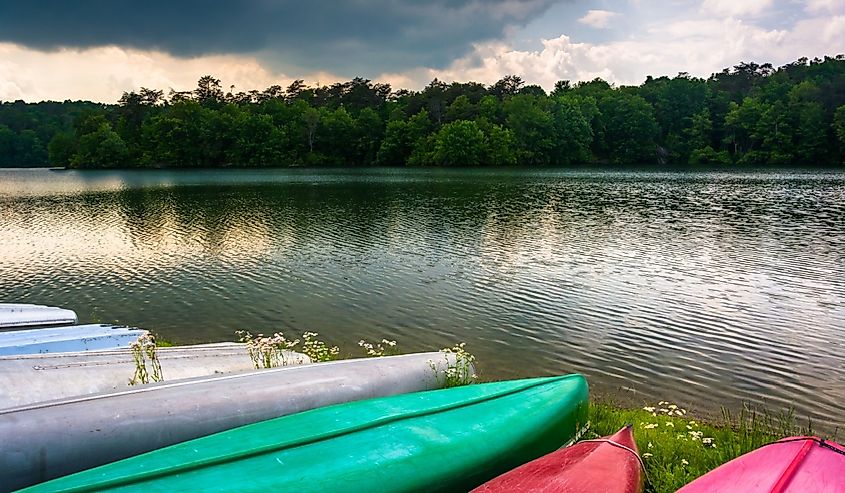
There have been sightings of rattlesnakes at Prettyboy Reservoir in central Maryland. This scenic spot is the centerpiece of the 7,380-acre Prettyboy Reservoir Cooperative Wildlife Management Area north of Baltimore. The area is a popular recreation spot with facilities for horseback riding, birdwatching, fishing, boating, hiking, and biking. The reservoir’s surrounding area is also popular with climbers thanks to its tall rock formations, jagged cliffs, and loose boulders. Notable features include the Upper Gunpowder Wall at the north end of the lake and the Reservoir Wall and Bonus Wall at the southern end. You’re most likely to encounter rattlesnakes in these rocky areas and forested trails, so always be aware of your surroundings and look out for sunbathing snakes in the warm months.
Rocky Gap State Park
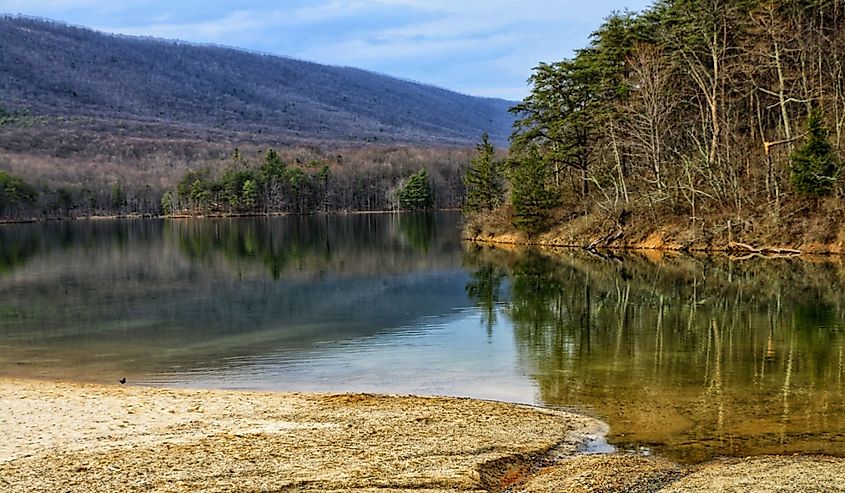
Rocky Gap State Park in Allegany County is over 3,000 acres of pristine wilderness—with plenty of places for rattlesnakes to hang out, undisturbed by human visitors. The park contains a 243-acre lake, Lake Habeeb, ringed by mountains. The lake is fed by the Rocky Gap Run, which flows through a rocky, mile-long gorge. Rocky Gap is popular with hikers, boaters, hunters, fishermen, and campers who all come to enjoy the natural amenities and breathtaking scenery. With steep cliffs, rocky gorges, and thick forests, it’s no wonder the park is home to rattlesnakes, although encounters with visitors are rare. If you do see a snake on one of the park’s many trails or recreation areas, alert a ranger so they can safely remove it if necessary.
South Mountain State Park
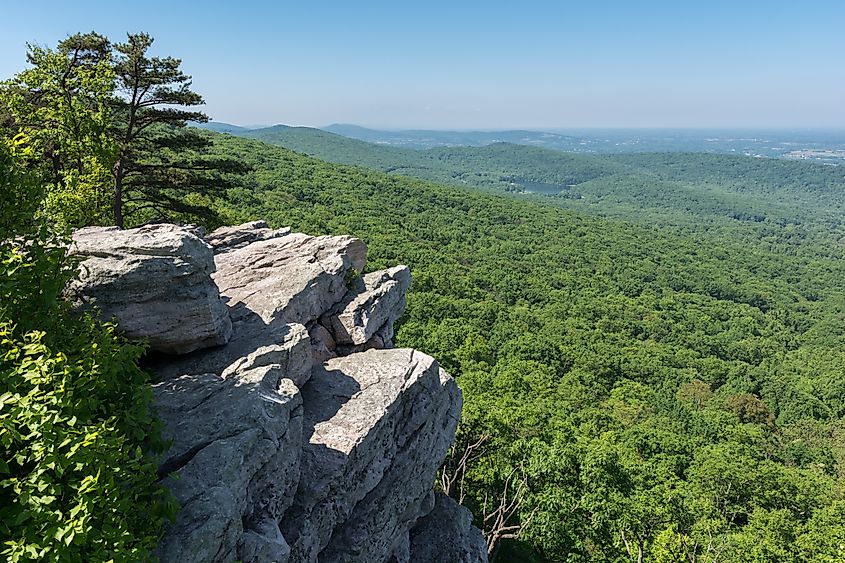
The South Mountain Recreation Area near Hagerstown in Washington County covers a huge area of wilderness, including 40 miles of the Appalachian Scenic Trail, which winds over 2,000 miles along the Appalachian Mountain ridge, the Weverton Cliffs, and the scenic viewpoint at 1,700 ft high Annapolis Rock. When hiking, be careful where you step, as rattlesnakes can be found in the area, especially at higher elevations, and wear long pants and boots that cover your ankles. There are many ways to enjoy the area, including biking, fishing, climbing, and camping. If you are camping, be especially mindful of where you’re sitting and where you put your tent and sleeping bag. Be careful around leaf litter and rock piles, and watch where you put your hands and feet.
Snake Safety
Rattlesnakes are most active during the warmer months, so summer visitors should be especially wary. If you see a snake, give it some space. Rattlesnakes will only strike when they feel threatened so it’s important to step back, give them room, and not make any sudden movements that might surprise them. Attacks are very rare, but if a snake bites you, you should contact the Maryland Poison Center immediately and seek medical help. Contrary to popular wisdom, applying ice or a tourniquet is not a good idea, as this can worsen the injury.











